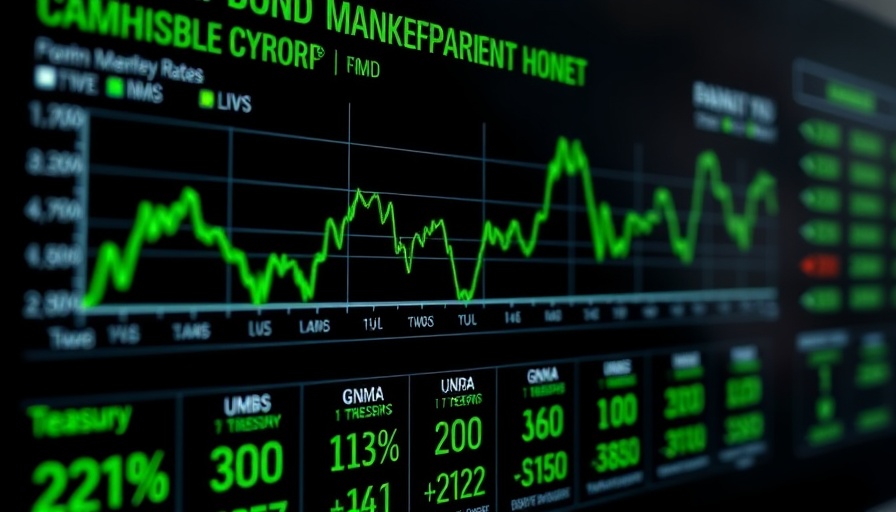
Bond Market Stability Amid Uncertainty
The bond market has recently displayed a notable steadiness, despite deepening political tensions surrounding the potential U.S. government shutdown. Investors have been watching for signs that might indicate how the market will respond to the current uncertainty. On the surface, the trading day on September 29, 2025, felt rather stable, with minor fluctuations capturing attention mostly during the market's opening hours. Yet, this relative calm comes with a backdrop of looming questions that investors must address.
Government Shutdown: Implications for Investors
As Congress has failed to pass the necessary funding bills, a government shutdown seems imminent. History shows that such interruptions can lead to instability in financial markets, but often yields a quick recovery. However, longer or repeat shutdowns could signal deeper issues, prompting investors to flock toward safer assets. It’s essential to recognize that while many shutdowns are resolved quickly, their potential impacts can reverberate across the economy, as seen during the long shutdown of 2018-2019, which notably affected stock prices and led to a decrease in Treasury yields.
Current Market Dynamics: Flat Yields
On this noted trading day, bond yields remained stable, slightly stronger starting around 4 AM ET and mostly flat throughout. MBS or Mortgage-Backed Securities showed a minimal uptick, indicating investors are still finding some confidence in this section of the market. Analysts often suggest these movements are indicative of the current climate, with investors choosing to stay put, awaiting further developments in Congress. With average mortgage rates stabilizing at 6.38%, individuals looking to refinance or purchase homes may find themselves in a holding pattern, assessing their next steps.
Historical Context: Understanding Government Shutdowns
Government shutdowns have become eerily routine in U.S. politics, with the current standoff reminiscent of past conflicts over funding. Since 1950, there have been 21 shutdowns, with varying degrees of economic impact. Interestingly, while minor disruptions generally do not significantly affect corporate earnings, prolonged standoffs tend to evoke caution among investors, particularly in unpredictable economic times. The unique circumstances surrounding this current shutdown—with a polarized Congress and a fragile economy—leaves much at stake for bond and equity traders.
Future Predictions: Market Conditions Post-Shutdown
If a shutdown occurs, the bond market could face shifts in capital allocation as investors reassess risks versus returns. Historical precedents reveal mixed outcomes; for instance, during longer shutdowns, there can be notable declines in stock markets, potentially leading to increased demand for government securities as safe-haven investments. Furthermore, the lack of timely economic data—such as the consumer price index—during a shutdown could cloud the Federal Reserve's decision-making process, further complicating the investment landscape.
Preparing for Uncertainty: Tips for Investors
Amidst this backdrop of uncertainty, it’s vital for investors to adapt their strategies. Diversification remains paramount; spreading investments across different asset classes can mitigate risks. Investing in quality companies known for resilience during challenging economic conditions is advisable. Investors should also stay informed, seeking updates about the political climate and economic indicators that emerge throughout a potential shutdown. Staying the course while being flexible to pivot when needed can provide steadiness in the uncertain waters of economic fluctuation.
Conclusion: Stay Informed and Adaptive
The current state of the bond market and potential government shutdown serves as a reminder for investors: adaptability is crucial. Emphasizing a diversified investment approach while staying tuned to economic shifts can empower individuals to navigate these unpredictable times wisely. By remaining proactive, investors can work towards not just surviving but thriving in changing environments.
 Add Row
Add Row  Add
Add 




Write A Comment